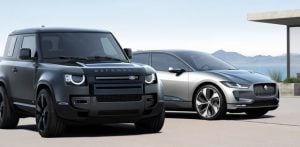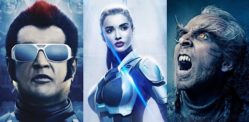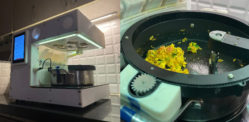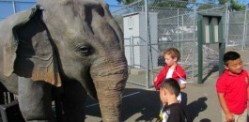"we are building the world’s most capable humanoid"
Boston Dynamics has unveiled new footage showcasing the latest capabilities of its Atlas robot.
The humanoid machine now demonstrates fluid, full-body movements, including walking, cartwheeling, and even breakdancing.
The company developed Atlas’ movements using reinforcement learning, leveraging motion capture and animation as reference points.
This approach allows the robot to execute increasingly complex actions with natural coordination.
The video, released as part of Boston Dynamics’ research with the Robotics and AI Institute, underscores the company’s commitment to pushing the boundaries of robotic mobility.
Boston Dynamics is also deepening its collaboration with NVIDIA, integrating the Jetson Thor computing platform.
This partnership enables Atlas to process complex, multimodal AI models alongside Boston Dynamics’ proprietary whole-body and manipulation controllers.
The Atlas robot was an early adopter of NVIDIA’s Isaac GR00T platform, leading the development of humanoids.
Boston Dynamics said its developers and research partners are making breakthroughs in learned dexterity and locomotion AI policies using Nvidia’s technology.
Boston Dynamics and Nvidia are collaborating on defining parameters for functional safety and security architecture, key learning and computer vision pipelines.
Boston Dynamic’s chief technology officer Aaron Saunders called robots “the bridge between simulation and the real world”.
In a statement, he said: “With the current generation of our electric Atlas, we are building the world’s most capable humanoid, and collaborating with Nvidia to integrate Jetson Thor means that robot now has the highest performance compute platform behind it.
“Isaac lab is allowing us to develop state-of-the-art AI capabilities, and the early results are exciting.”
The integration of AI enhances the robot’s ability to adapt to dynamic environments, making it more versatile for potential real-world applications.
While many robotics companies prioritise functionality over movement aesthetics, Boston Dynamics continues to focus on both.
The company’s research has long been centred on replicating human-like motion.
This sets it apart from competitors such as Tesla, Agility Robotics, and Unitree.
These companies emphasise industrial and logistical applications, where precision in object handling takes precedence over agility.
Chinese robotics firms, including Unitree, have made significant strides in humanoid development.
Their G1 humanoid, for example, has demonstrated impressive balance and agility. However, Boston Dynamics remains at the forefront of innovation.
The latest Atlas video illustrates its ability to initiate runs, execute controlled landings, and seamlessly transition between movements.
These features suggest that AI-driven robots are progressing toward human-like adaptability in motion.































































